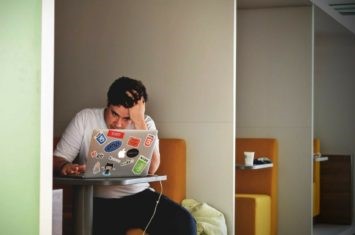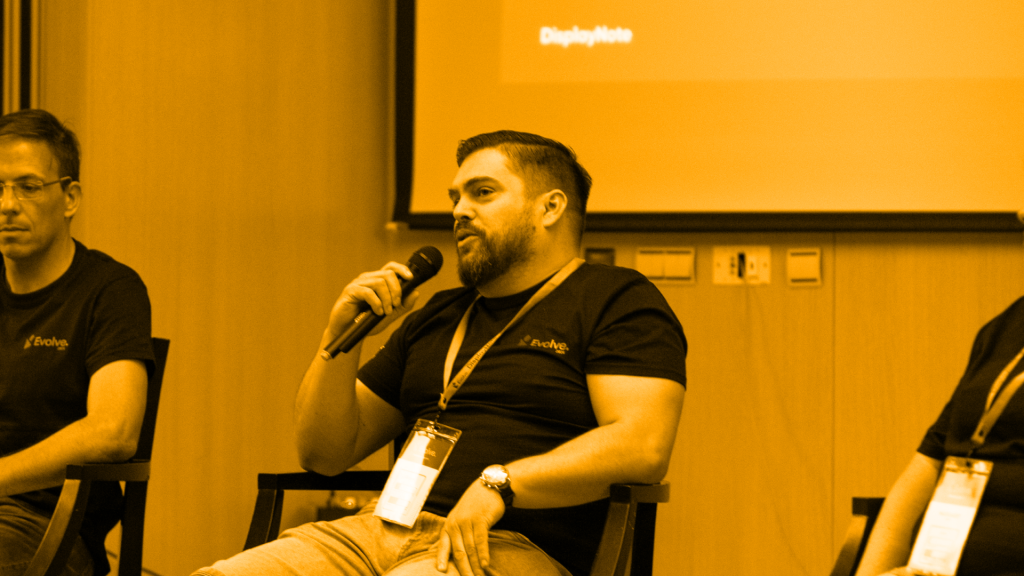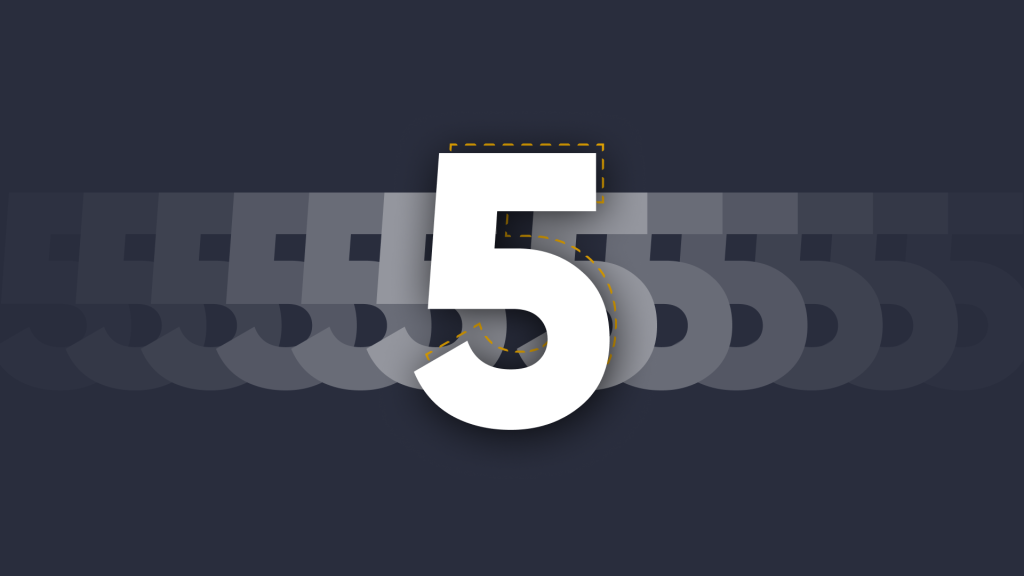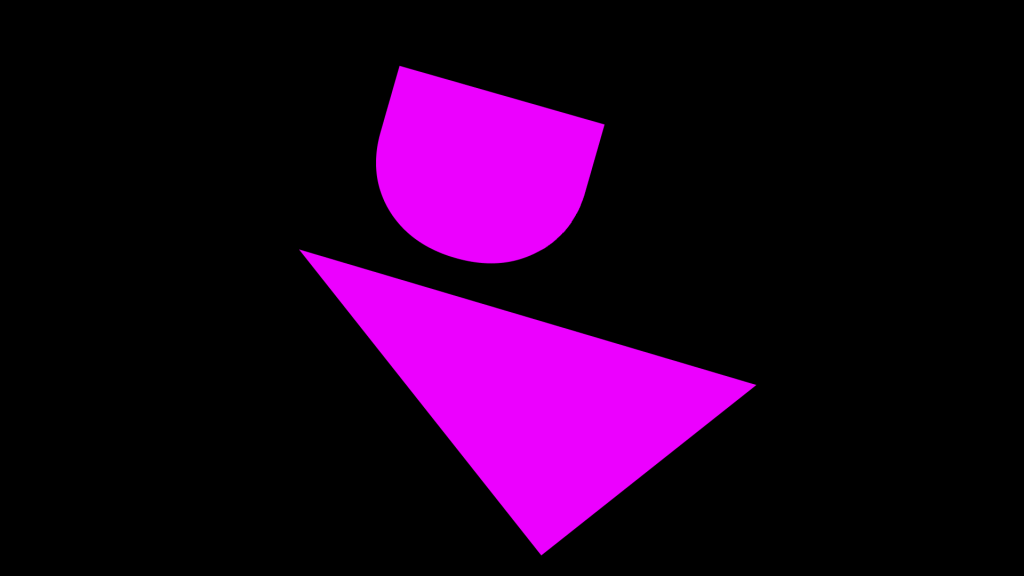
Why collaboration is so damn complicated.
A story about 39 people on 5 continents in 40 spaces, trying to get stuff done.
I recently wrote on a blog post about how workforces are becoming more Nomadic, moving around more than ever before. I said something like:
Now, when we go into work it’s the norm to move from space to space so that we can interact and work with more and more people. You might start the day going to your desk, then to a huddle space, then to a conference room, back to your desk and then check in with a co-worker, who may be sitting down the hall but is just as likely to be at a coffee shop.
A few days later, I started thinking about this line and questioned its efficacy. Is it the norm or did I write because:
- It sounded good
- It fits with the vision of DisplayNote Technologies and helped serve the blog post I was writing.
So I wanted to put this to the test. Do we move around a lot? Interact with others, jump into huddle spaces for a quick ideation sessions, communicate and collaborate with distributed teams, co create content with my colleague who happens to be in a coffee shop (in blog posts like these, she’s always in a coffee shop not a cold bus station).
I took an ordinary day and kept a sort of log, detailing what I was doing, space I was in, who I was working with, what tech we used, what worked and what didn’t.
0730 – 0915
I arrived into the office and go to my desk with my laptop. Checked the five sites I check pretty much at the start of every day: Zoho (for inbound leads), ZenDesk Chat (for overnight chat requests and sales leads), LinkedIn (for company mentions and personal noisiness), Asana (dashboards on all work projects) and The Guardian Football.
Write content for the first draft of an email campaign we’re working on and send it to my colleague (via email) for review. That’s our system – I send, she reviews, sends back, etc. Not ideal but it works.
0915 – 0930
We move to a small office for our daily stand up. There’s a 65 inch screen and we use the screen share and video call functions in Montage for Teams to connect with our Spanish office. Mostly this is a quick roundtable of what we did yesterday, plans for today and blockers to any actions needed for projects to be completed.
0930 – 0950
I go back to my desk and onto the laptop again for some marketing automation work on HubSpot.
0950 – 1035
I receive a message with an attached file from a colleague about some product on boarding. There’s a ‘oh, this needs sorting now’ issue. So I print off the slide deck, I walk to his table and we run through the proposed flow, swapping round pieces of paper and jotting notes on them. Do a Montage for Teams quick video call with an engineer to get his feedback on feasibility and likelihood of changes being accepted.
1035 – 1200
With a major exhibition coming up, four of the team take laptops and head into the main board room where there’s, among other things, a 70 inch Large Format Display and a Montage for Meetings Wireless Presentation System.
I want to present 3 proposed designs schemes and wirelessly stream them to the Large Format Display. My colleague, on another laptop, streams an image of the floor plan so we can see the plan and designs schemes side-by-side.
My CEO, as is his remit, challenges and proposes a completely new take on what we’ve done. He does a quick Google search and finds an image which he also streams to the screen at the same time.
During the meeting we need to bring in our tech team (to run through our plans for product set up/networking) so he joins us via join.montage.com.
We chat and he uses his PC to view what’s happening on our Large Format Display before signing off.
We agree to research what the CEO has proposed and come back with updated designs and ideas.
1215 – 1305
During the meeting above, I get a message on Montage for Teams saying a partner company want us to join a conference call which will be about their plans for another tradeshow (one we’re supporting).
This is a conference call and we take it at our desks. We join and it’s already started. There’s about 20 people on the call (big CC list and not sure who does what).
I think to myself… so it feels a little rude to say ‘hey’ we’ve joined. So we just keep quiet. In support of the call there’s an email to follow along. The main presenter is talking but I’m not sure exactly which part of the email she’s talking about.
As my attention wains, I open Asana to see what needs done and then hit mute on the call and then kind of listen in an absent minded way. The call continues but I hear no reference to what we need to do so I ping my guy at the partner company and send the questions I need answered to him. He sends responses via email and I drop off the call. Not getting those 50 minutes back. Ever.
1305 – 1315
I grab lunch and move to a little quiet area of the office and sit scrolling my phone whilst trying to not get soup on the screen. Check Zoho for leads, twitter for @displaynote mentions, email, Montage for teams and Zen Desk.
1315 – 1425
I have a meeting with customers to run through a proposal for new solutions we’re developing and join a GoToMeeting call that brings in their colleagues from Europe, Japan, & USA.
I have moved to small office with one small 42” screen, a Montage Wireless Presentation System, one table and 2 chairs. It’s used for small breakouts and, mostly, to get some privacy.
One of the guys on the call was driving to a meeting and joining from his mobile phone so, for his benefit, I have to read the proposal verbatim. Annoying for me because I really needed him to see the visuals and even more annoying for him as it must have been like listening to a really dull audio book. So after an hour of ‘did you get that/can you imagine that, we agreed to follow up by me sending him an email and him saying he would read it. Possibly something I could have done without the call? Can we and will we ever get away from these little bumps in the road that are part of life?
1430 – 1540
I begin running through marketing workflows with the marketing and
customer support teams. We’re in need of a change of scenery: we need to get more relaxed; the topic in hand is complex and my energy is starting to dip. We go to a little huddle space with some softer furnishings: sofas, armchairs, a 50” Samsung screen and a Montage Wireless Presentation System.
My colleague presents the workflows and streams them to the screen. The rest of us comment verbally and she updates the documents live. The change of space really helped, it definitely feels a lot more relaxed and helped us get through a tricky piece of work.
1545 – 1700
Back to my desk to respond to emails and calendar requests that arrived during the day. I have seen them on my phone but nothing was overly urgent. I check in on Moz to get an update on the results of our SEO efforts then Zoho for leads and Zendesk for sales/marketing related requests.
I update Projects statuses on Asana moving tasks to the ‘completed’ bucket and entering new ideas and projects onto the to-do list.
1700 – 1715
Over now to my CEOs office to give him a run through of what’s happening: this is good old fashioned one-to-one conversation.
1715 – 1810
Last task of the day: sitting alongside one of the design team and running through wireframes and design ideas for two projects: a new web store and updated support page on the website.
So I grab a chair and pull up to his desk where he proceeds to run through work he has done on InVision. I make suggestions which he implements live and we both review as we go. This is my opportunity to say those annoying things designers love, like “can we make that more green”, “this needs to pop” and “I’m not sure about Raleway font for the Headline.”
Overall it’s a good session and we can communicate clearly. Being in close proximity means we can both pick up on physical cues: like a grimace when one of us not sure on something or an exhalation when something just doesn’t work.
We finish up by him saving out changes – I can log in later to update and add comments.
Notes and observations
There actually was a lot of moving from space to space. I counted 10 different spaces, more than I expected.
I moved from space to space a total of 13 times.
Device types used and interacted with: smartphones, surface hubs, 4-5 Lenovo PCs, 2 Macbooks, 1 x Sony 50” TV (non touch) 2 x 65” NEC Large Format Display and 1 x Sahara 70” Clevertouch.
Not including email, chat and talking to colleagues in the kitchen, I interacted with 39 People. 8 of these were in the office and 31 somewhere other than the office. The 20 person conference call skews this a lot.
20 person phone calls are the pits: I’d bet good money that nearly every attendee was as ‘switched off’ as I was.
No meeting lasted exactly 30 mins or 1 hour despite what we’re pre conditioned to think. How better to schedule meetings in the future?
Human contact, for me, is necessary: that close connectivity cuts through a lot of diplomatic email. Video calls should look to get as close to this as possible.
Each space requires a different mind-set or it puts its own stamp on the user: how I behave and act in, say, the boardroom, is so different to what I do and expect in a huddle space. i.e. boardroom to me means ‘high impact’ where you get a lot of management team coming together and this time should be valued highly: tech should be top quality, always on and, at the same time, fade into the background. Compare this to the huddle room attitude of ‘just fire it up on screen’.
I should make a note in my diary to revisit this in 5 years to gauge if we are becoming even more or less nomadic?
In Summary
No doubt, the world of work is becoming increasingly complex as it grows more across silos, more dynamic, and involving a wider, larger, and more diverse range of actors via a growing array of device types, locations and spaces.
The task for today’s organisations, I believe, is to focus improvement efforts in and around those moments when workers come together collaboratively and begin to answer questions like: how do we get the right people together and make it easy for them to connect, how do we improve the resulting knowledge from these interactions and what’s the best approach to optimum output from the process in terms of content and communications.
Next Steps…
Interested in talking about the best ways to collaborate across your teams, departments, locations or meeting rooms?

Want to stay in the loop?
Keep up-to-date with everything DisplayNote – including new releases, job openings, and customer giveaways.
Don’t worry, we’ll not spam you and we’ll never share your email with anyone






